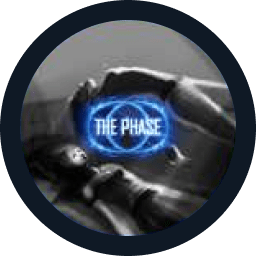Lucid Dreaming Mask — Practice Effectively
Lucid Dreaming App — Dream Journal, Dream Tracker & Lucid Dreaming Community
If your goal is exclusively mastering lucid dream induction techniques for influencing or learning about your body, applying direct methods (those practiced without initially falling asleep) might not be very effective. Such techniques often require considerable effort and usually aren’t as efficient as indirect methods, which are simpler and quicker to apply after waking. Beginners might find direct techniques ineffective and frustrating. It’s best to start with indirect methods!
General Rules for Direct Techniques
Direct lucid dreaming induction techniques become relevant when your objective extends beyond specific goals like self-healing, and you aim to achieve mastery in overall dream control. Honestly speaking, even if you hadn’t initially planned to explore dreaming, first experiences often spark deep interest, expanding far beyond one particular use.
Optimal Practice Timing
Best results from direct methods are achieved by the “wake-back-to-bed” method or right before nighttime sleep. For instance, inducing a dream state is around twenty to fifty times easier through “wake-back-to-bed” than during daytime. The core idea is waking up at night or early morning, spending 5–15 active minutes awake, then lying down again and immediately starting the techniques, preventing full sleep or catching awakenings as with indirect methods.
Direct techniques also work effectively before nighttime sleep when the body is naturally prepared for restoration. Daytime practice is least effective, so nighttime and evening are preferable.
Body Position
If you notice quickly falling asleep during direct method practice—particularly today—try an unusual sleeping position. For many, positions like lying on their back or stomach are uncommon and may slow sleep onset, aiding your goal.
If you’re alert and refreshed while practicing direct techniques, adopt your most natural sleeping position—side, stomach, or any comfortable position.
Relaxation
Contrary to popular belief, extensive relaxation isn’t crucial with direct techniques, as these naturally facilitate relaxation. Just lie down for 1–3 minutes, think or daydream briefly, then immediately begin your chosen technique.
Number and Duration of Attempts
Unlike indirect techniques, usable repeatedly throughout the day, direct methods demand significant effort and are challenging to sustain multiple times daily. Thus, limit direct method attempts to once per day.
Each attempt shouldn’t exceed 15–20 minutes. Overextending can disrupt your sleep, induce insomnia, and cause fatigue, ultimately hindering success. Quality outweighs quantity here. If unsuccessful within the allocated time, relax; try again the next day when fresh and focused.
Enjoyment of the Process
Enjoyment in practicing these methods itself is crucial. Viewing them strictly as tools to deliver results, especially if frustration arises from failures, won’t help achieve your goals. When practice becomes engaging and pleasant, negative emotions decrease, avoiding prolonged unsuccessful periods and enhancing practice longevity and productivity.
Technique Variations
Direct dream-entry methods include visualization, observing images, rotation, “cell-phone technique,” listening, phantom swinging, and forced sleep, similar to indirect methods. Main differences lie in duration and reliability; direct techniques might manifest without guaranteed outcomes. For example, phantom swinging may occur continuously without ensuring sleep onset, lacking sufficient intensity.
There are three primary approaches to direct techniques:
- Classic method: Use just one technique per attempt. Two or three can be tried, but on separate days.
- Alternation: Alternate between 2–3 techniques within one session, practicing each for 1–5 minutes. Adjust intensity based on alertness and fatigue levels.
- Cycling: Perform 2–3 techniques, each lasting 10–60 seconds, when sleep onset is imminent.
Begin with the classic approach. If consistently falling asleep, shift to alternation for increased activity. If still ineffective, use cycling, similar to indirect methods but longer.
Personal conditions may vary each session. Typically, I begin with the classic approach. If I’m notably tired and risk immediate sleep, I shift toward active alternation or cycling. Avoid excessive wakefulness.
Floating State of Consciousness
All mentioned techniques primarily help achieve a crucial state—floating consciousness. Stable direct technique results rarely occur without it. The floating state involves avoiding total control during the process. Brief consciousness dips, often leading to sleep onset, should regularly occur.
A common mistake impeding direct method mastery is excessive control. Techniques should happen alongside drifting into sleep, maintaining cognitive inertia. If overly alert, opt for passive methods and comfortable positions, reducing consciousness levels. If nearly asleep, actively cycle techniques and assume uncomfortable positions. Aim for consciousness dips approximately once per minute or less frequently. If sleep doesn’t follow consciousness “surfacing,” keep attempting deeper consciousness dives. After surfacing, note signs like vibrations, noises, or vivid technique sensations. Check these indicators after each “dive.”
Practitioners typically master floating consciousness quickly, performing over ten consciousness dives within a 15-minute session, seeking optimal depth. Avoid diving excessively deep, fully losing yourself in sleep. Such dips frequently occur during direct techniques, signifying a lack of full control—a vital point.
Remember the simple truth of direct techniques: active awareness and complete control signify wakefulness, not proximity to sleep, despite perceptions. Releasing this control invites deeper, richer states.
For instance, imagine waking at night, visiting the bathroom, drinking water, and returning to bed. Knowing rapid sleep might occur, you lie on your back, preventing quick sleep onset. You cycle between rotation and visualizing your hand (each about a minute), enhancing alertness. Rotation feels strong; visualizing your hand is weak, prompting rotation again. Three minutes in, briefly blacking out, you quickly attempt separation or reality testing. Without dream confirmation, you cycle again. Soon, a deeper dip occurs, continuing visualization by inertia, suddenly clearly seeing and feeling your hand vividly—as if genuinely awake.
Realizing you’re dreaming, you get up, deepen your state, and tackle tasks like self-healing experiments.
Important: Don’t practice direct and indirect methods on the same day. Opt for direct techniques in the evening when sleep time is limited, and indirect methods in the morning when rest and extended practice are feasible.











